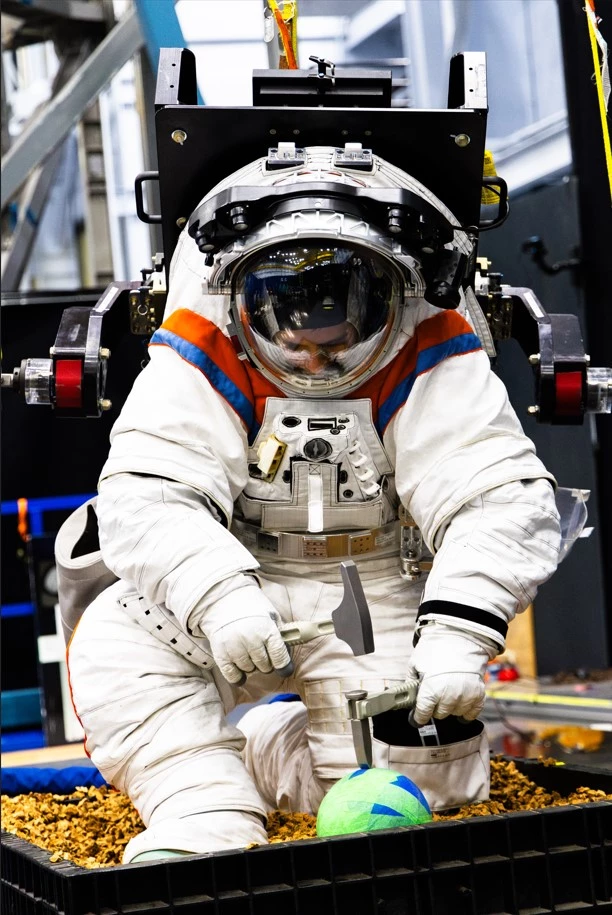NASA's next Moon landing may have been put back a year, but that hasn't stopped Axiom from showing off the practical version of its Axiom Extravehicular Mobility Unit (AxEMU). Better known as a space suit, it will protect next-gen Moonwalkers.
No one has set foot on the Moon in over half a century and no finished design of a suit for such a task has been completed in that time. Even the space suits that have been made since then have been for very different reasons, including protecting astronauts against sudden cabin depressurization or for spacewalks outside the International Space Station.
The first space suits worn by American astronauts during the Mercury project of the early 1960s were slightly modified Navy Mark V high altitude suits. However, the ones used for the Apollo Moon landings were highly advanced and specialized pieces of engineering.

Popular science fiction films to the contrary, wearing a spacesuit isn't like pulling on a pair of coveralls and slapping a goldfish bowl on your head. A space suit is essentially a wearable spaceship that recreates a human environment and protects the wearer against the hostile environment outside. Using one is less like putting on a garment and more like carrying out a deep sea diving operation with mixed breathing gasses. That requires a lot of training and preparation as well as taking hours to complete tasks that should normally take minutes.
The upshot is that this strange blend of tailoring and engineering has to go a long way to not only protect the wearer, but also to make them comfortable as well as able to complete the tasks at hand without becoming tired too quickly.
In the case of the AxMEU, the brief was to create a suit for NASA's Artemis Moon program that is suitable not only for walking on the surface like Neil Armstrong and company, but to do so and carry out complex tasks in the unusually harsh conditions of the lunar south polar region.

Axiom says that it's made many improvements to the suit since the concept version in March 2023 and it's expected to pass its design review in June of this year, followed by testing through 2025. These tests will include working in the swimming pool of NASA's Neutral Buoyancy Laboratory and being subjected to the rigors of a thermal vacuum chamber that reproduces not only a hard vacuum but extreme heat and cold.
The latter is particularly important because the suit must be able to withstand freezing shadows of the sort found at the south pole for over two hours.
The new suit boasts improved mobility over earlier types, which will allow astronauts to bend and squat, and it will incorporate special tools for exploration and science. Because the suit will be worn by many different professions, input has been solicited from engineers, astronauts, and a wide range of individuals.
Source: Axiom





